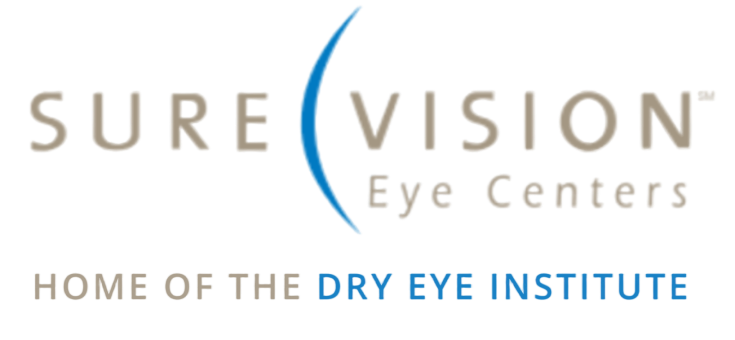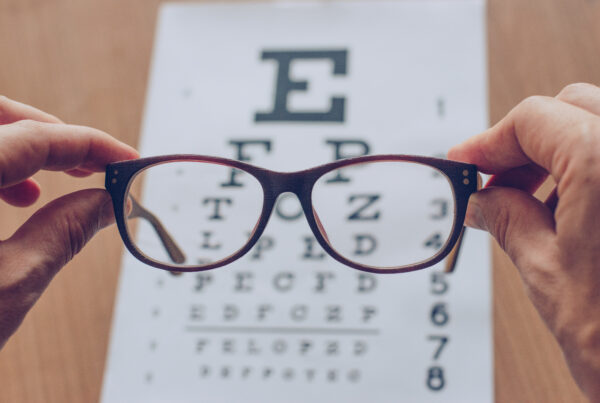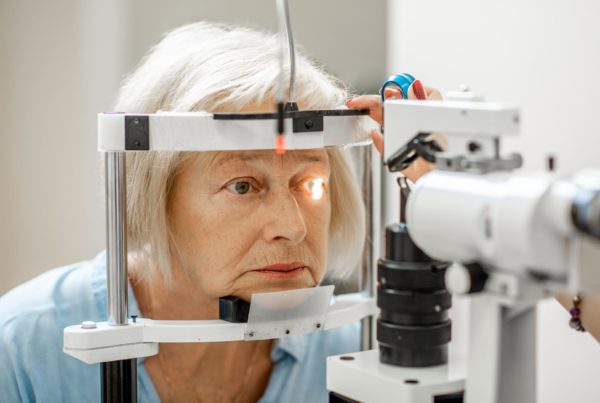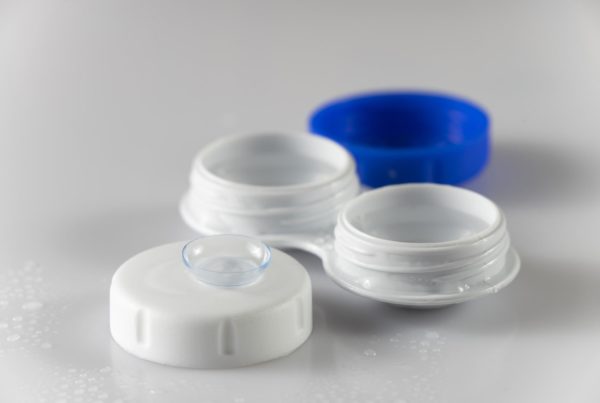
Cataracts develop when the natural, clear lens you were born with gets cloudy and no longer allows clear vision. Modern cataract surgery involves removing this cloudy natural lens and replacing it with a clear, man-made, artificial lens to allow for better vision. These lenses are placed inside of the eye and are thus called intraocular lenses (or IOLs for short). We are fortunate that we live in an era where there are many different types of lenses available to help meet your own personal visual needs. However, with all these choices it can be a bit overwhelming to understand the options.
Let’s first start with some general information. Prior to your cataract surgery, your surgeon will perform an examination and numerous sophisticated measurements of your eyes to let you know which intraocular lenses might be an option for you. At SureVision Eye Centers we use state-of-the-art testing equipment to help ensure the most accurate measurements and therefore the most precise results for your surgery.
The decision of IOL choice is an important one as this is the lens that will be in your eye for the rest of your life. And, the lens you select may also determine, to some extent, whether you will need glasses after cataract surgery. But, don’t worry, the information here will provide you with a starting point on that journey and your experienced surgeon at SureVision Eye Centers will help counsel you along the way on the best options for your eyes and specific visual needs, as everyone is unique.
Lens Type
There are three main options to choose from:
- Standard/Single-Focus
- Astigmatism-Correcting
- Range of Vision
(1) Standard/Single Focus Lens
This is the standard lens that is covered by your insurance plan. For that reason, this is the most common type of lens used in the United States. This is a good lens, but it is the oldest technology IOL that we will discuss, and you should understand its limitations before choosing this option. First, this lens is single-focus, which means that it does not allow for a range of vision without glasses. This lens is typically set to give either good distance or good near vision, but cannot give both at the same time.
The second limitation is that this lens does not correct for something called astigmatism. Astigmatism means that the front surface of the eye is not perfectly round. Astigmatism is quite common, is a separate problem not related to the cataract, and blurs the vision if not corrected. Astigmatism can be corrected at the time of surgery or afterward with glasses or contact lenses. The standard lens, that is covered by insurance, does not surgically correct the astigmatism. So, if you have astigmatism and elect to have the standard IOL, you will likely need prescription bifocals after cataract surgery to treat both the astigmatism and provide for a range of vision.
(2) Astigmatism Correction Lens
Patients with moderate to large amounts of astigmatism can have their astigmatism surgically decreased at the time of their cataract surgery. This allows these patients much clearer distance vision without glasses after cataract surgery. While medical insurance does help cover the cost of cataract surgery it does not cover astigmatism correcting surgery. So, there is an extra, out-of-pocket cost for this option. Depending on the amount of your astigmatism your surgeon may recommend either a specialized astigmatism correcting lens, called a Toric lens, or an additional incision on the front surface of the eye. This incision is called a “limbal relaxing incision” when done manually by the surgeon or an “arcuate incision” when completed with the latest technology femtosecond laser. The only limitation to these lens options is they are still single focus, so if we set your focus for distance (which is most common) you will still need, at a minimum, reading glasses for near vision. Your surgeon will inform you of your specific options and the relative cost if you wish to proceed with astigmatism correction to give you better distance vision without glasses.
(3) Range of Vision
For patients who don’t like wearing glasses and want the latest technology intraocular lens to give them a range of vision and further decrease their dependency on glasses they should consider a lens in this category. This option includes both multifocal and extended depth-of-focus lenses. Multifocal IOLs have been available for a number of years and can provide good distance and near vision. They do still have some limitations, however. First, they don’t typically provide good intermediate range vision, which is what we use to see the computer screen, read music when playing the piano, see the dashboard when driving, etc. Also, this older technology has a higher risk of glare and halos around lights after cataract surgery, which is why we don’t use them as much anymore.
In 2016, the first extended depth-of-focus IOL, called the Symfony® lens, was approved by the FDA and remains the only lens of this type on the market. This lens provides an extended, more gradual range of vision and allows most patients excellent distance and intermediate vision and good near vision. However, for very small print or if you are reading for hours on end you may still need booster reading glasses with this lens. While the risk is much lower than traditional multifocal lenses, this lens may also have a slightly increased chance of glare and halos compared to the standard IOL.
Some of the patients who may want a range of vision lens also have astigmatism. The multifocal and extended depth-of-focus IOLs now also come in an astigmatism-correcting Toric option for these patients. Again, while these range of vision lenses are the latest technology available today and can provide substantial benefits they are not covered by your medical insurance, and there will be an associated out-of-pocket expense for this option.
Summary
I hope this introduction has shed some light on this complex decision or at least provided you with a starting point from which you can come up with some questions for your surgeon. In short, if you don’t mind wearing glasses or contacts after cataract surgery the standard lens that’s covered by insurance may be just fine for you. However, if you would like the best possible vision without glasses you may want to consider the premium lenses in options 2 or 3 above to further decrease your dependency on glasses. Even with these latest technology lenses, there is no perfect lens for all patients and no surgeon can guarantee perfect 20/20 vision in all ranges with any of these current technologies. The nice thing about working with one of our surgeons at SureVision Eye Centers is that all our surgeons are experienced at implanting each of these lens technologies. It is never our goal to “sell you” on any of the options, but rather provide you with the full range of available technologies and help guide you to the choice that makes sense for you, your budget, and your visual desires. If you have cataracts and are unhappy with your current vision, please contact us or call our office to schedule an appointment to discuss cataracts treatment in Creve Coeur, MO, and Alton, IL.



